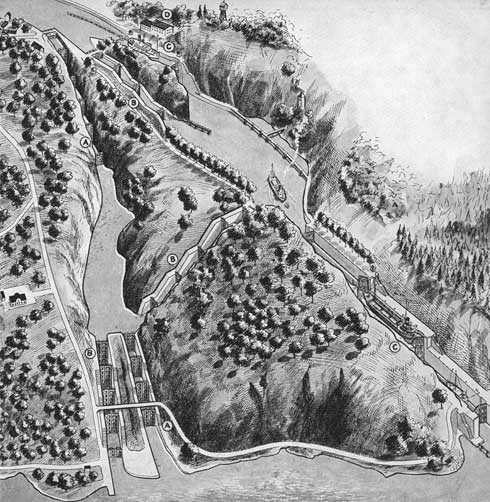
The flights of locks were completed in 1800 (A), 1844 (B) and 1916 (C).
At the very top of the drawing is the Canal Office (D).
The town of Gothenburg at the mouth of Göta River was until 1658 Sweden's only gateway in the west to the North Sea, so the river was a very important means of transport for the foreign trade of our country. However the falls at Trollhättan were for many centuries a serious obstacle to the communications. The shipped goods had to be transferred to horse-drawn waggons some distance from the falls, then transported many miles by land on dirty roads along the river and finally transshipped, where the river was navigable once again. The first attempt to overcome this problem was made by the famous Swedish inventor and engineer Christopher Polhem, but an accident in 1755 stopped his project, a system of locks, from being fulfilled. In 1800 the first completed flight of locks was ready to be used and from now on the Göta River is navigable all the way from Lake Vänern to Gothenburg. As the ships grew bigger there was a need for bigger locks and in 1844 the Swedish king Oscar I inaugurated a new flight of locks. It was used until 1916, when new bigger locks were built, which are still in use. These flights of locks constitute the largest collection of its kind in Northern Europe, moreover in a wonderful setting of beautiful nature, attracting many tourists. In the nearby Canal Museum (just opposite the Canal Office) you will learn more about the history of the locks and the technology used by their construction.